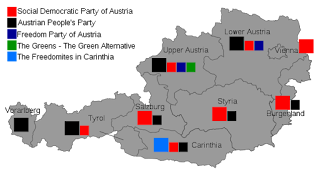Austro-Hungarian empire was one of the most powerful nations in the world before WWI. The war began in 1914, when on 28th of June 1914, Archduke Franz Ferdinand was assassinated during his visit to the Bosnian capital, Sarajevo.That was the spark for one of the major wars in the history of the world.
This is how Austro-Hungarian empire looked like is 1914:

In 1918, World War I ended but brought many problems to the majority of countries involved in it. Austria-Hungary was not an exception. After the war, the monarchy, that existed in Austria for hundreds of years, collapsed. The capital cities of Vienna and Budapest, the leftist and liberal movements and the opposition parties strengthened and supported the separatism of ethnic minorities because the empire consisted of many ethnic and cultural groups at that time. These parties opposed the monarchy as a form of government and considered themselves internationalist rather than patriotic. Eventually, the German defeat and the minor revolutions in Vienna and Budapest gave political power to the liberal political parties. As it became apparent that the Allied powers of the British Empire, France, Italy and the United States would win World War I, nationalist movements, which had previously been calling for a greater degree of autonomy for various areas, started pressing for full independence. The Emperor had lost much of his power to rule and the monarchy stopped existing.
Basically, after WWI the victorious nations decided to separate the ethnic minorities, destroying the empire. As a result, the Republic of Austria lost roughly 60% of the old Austrian Empire's territory. The first Austrian Republic was established in 1919.
This is how borders looked after the dissolution:

Another major event in the history of political geography of Austria was the Anschluss, or the annexation. It was the Nazi propaganda term for the invasion and incorporation of Austria into Nazi Germany in March 1938. Hitler wanted to unite Germany and Austria in order to establish the Great Third Reich and regain all the territory that was lost after WWI. Knowing, that Austrian people would vote for independence, Hitler threatens to invade the country.
This is how the borders looked like during the occupation:

The annexation of Austria lasted until the end of World War II in 1945, after which Germany was occupied by the Allies and Austria' former democratic constitution was restored.
However, in the immediate aftermath of the war, Austria, like Germany, was divided into four occupation zones and jointly occupied by the United States, Soviet Union, United Kingdom and France. Vienna, like Berlin, was similarly subdivided but the central district was administered jointly by the Allied Control Council.
Salzburg was part of the United States occupation zone.
In 1955, the Austrian State Treaty re-established Austria as a sovereign state, ending the occupation. In the same year, the Austrian Parliament created the Declaration of Neutrality which declared that the Second Austrian Republic would become permanently neutral. Today, Austria still remains it's neutrality and it is a parliamentary representative democracy comprising nine federal states.
Current map of Austria:

The city of Salzburg

Following World War I and the dissolution of the Austro-Hungarian Empire; Salzburg, as the capital of one of the Austro-Hungarian territories, became part of the new German Austria. In 1918, it represented the residual German-speaking territories of the Austrian heartlands. This was replaced by the First Austrian Republic in 1919, after the Treaty of Versailles.
The Anschluss (the occupation and annexation of Austria, including Salzburg, into German Third Reich) took place the 12 March 1938, one day before a scheduled referendum about Austria's independence.
Following World War II, Salzburg was the center of the American-occupied area in Austria.
Today, Salzburg is the fourth-largest city in Austria and the capital of the federal state of Salzburg. Salzburg has its own state constitution since 1999. The state government (Landesregierung) is headed by a Landeshauptmann ('State Captain') governor, who is elected by a majority in the Landtag parliament. State elections are held every five years.
As a citizen, living on Moostrasse 106, I would be represented by two political parties: Social Democratic Party of Austria and Austrian People's party.

Works cited:
http://www.nzhistory.net.nz/media/photo/map-austro-hungarian-empire-1914
https://en.m.wikipedia.org/wiki/Austria-Hungary
http://www.historyonthenet.com/nazi_germany/anschluss.htm
https://en.m.wikipedia.org/wiki/Allied-occupied_Austria
No comments:
Post a Comment